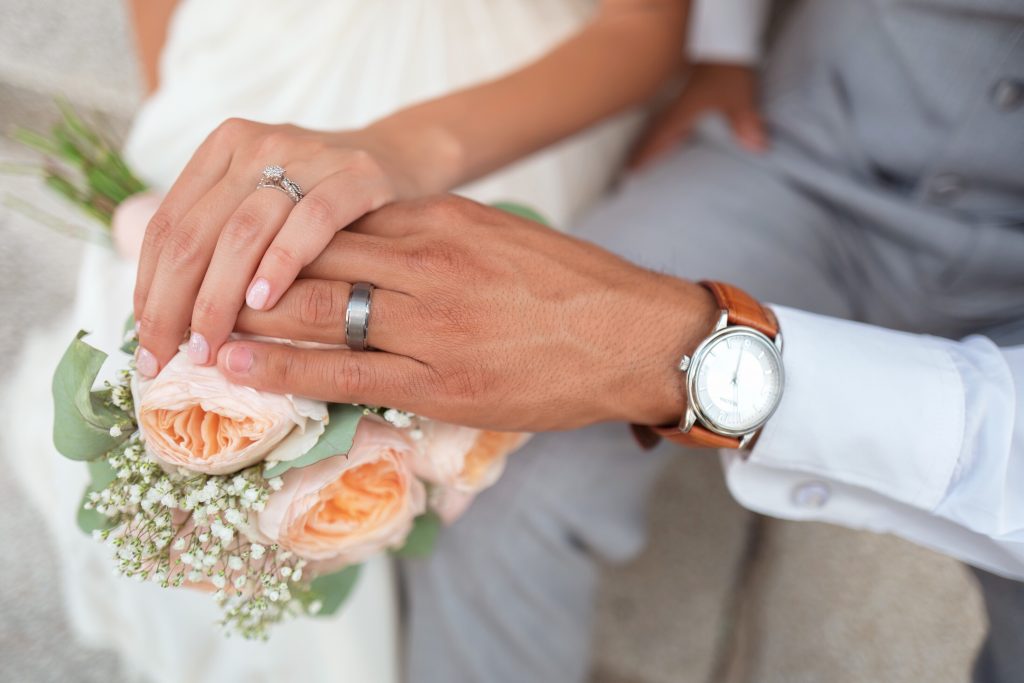I’m not married yet. My partner and I have two children, a mortgage and ten years’ relationship history together. Getting hitched kind of seems like a side issue now – a potential drain on our already-stretched resources rather than something to which we would look forward.
I still want to do it at some point, though. It’s symbolic, isn’t it? A stabilising influence on a family… and, well, nevermind all that, it’s also tax efficient.
As Gary Smith, chartered financial planner at Tilney, says: “In reality, there may be very little difference in the lives of married and cohabiting couples, but in the eyes of the Government, only those who are married or in a civil partnership are viewed as one part of a whole for tax purposes, with the ability to share their allowances.”
So, in the eyes of the Government, we only deserve tax benefits if we go to the hassle of getting hitched. Drat.
What are these allowances that make tying the knot so financially attractive?
Smith says: “In 2015, the Government introduced a ‘marriage allowance’ whereby a low earning (below £11,000 a year) spouse can transfer £1,100 of their personal allowance to their other half. The higher earning spouse must only be earning between £11,001 and £43,000 a year, but by utilising this allowance, could save up to £220 in tax this year. If you were married during the 2015/16 tax-year, you can potentially backdate a claim to April 6 2015, reducing the tax liability by up to £432. This is not permitted for couples who have yet to tie the knot.”
This one wouldn’t apply to me and James at the moment.
Next? Capital Gains Tax
“Married couples and civil partners have a further tax benefit when it comes to selling assets. Ordinarily an individual selling an asset for a profit can realise up to £11,100 in gains in the tax year before a tax charge becomes due. Before the sale however, assets can be transferred freely between spouses/ civil partners – with no liability to tax – in order to utilise the extent of their combined Capital Gains Tax allowance (2 x £11,100) or indeed they can be transferred in full to the spouse/civil partner who is expected to incur the lowest Capital Gains Tax charge. Either way, by splitting assets first, the couple could potentially save thousands in tax. This option is not available to unmarried couples, as movement of assets between couples is a disposal for capital gains purposes and would negate the benefits of this exercise.”
Yep, this one could come in handy in a few years. By the time it does, this benefit will probably have been removed.
Anything else?
The biggie: inheritance tax.
“The tax benefits of marriage are not solely confined to the couple’s lifetimes. In fact, perhaps the biggest financial gain comes in the event of death. Whereas assets valued above £325,000 passed between cohabiting couples on death may be subject to Inheritance Tax of 40% on the excess, a deceased spouse / civil partner can pass an estate of any worth to the surviving spouse without immediate tax consequences. Furthermore, any unused Inheritance Tax nil rate band by the deceased can be passed to his / her beloved for their use in the future; creating a potential nil rate band of £650,000 for the survivor. This will potentially improve further from April 6 2017 when the Residence Nil Rate Band (RNRB) is introduced and a married spouse will be able to potentially claim a further £200,000, resulting in £850,000 combined.
“Extending this point, if an individual makes a gift of capital/ assets to another individual during their lifetime it may be classed as a Potentially Exempt Transfer and, should death occur within seven years from the date of the gift, the beneficiary may be liable to Inheritance Tax. However, gifts between spouses or civil partners are not Potentially Exempt Transfers – they are ignored for Inheritance Tax purposes altogether.
“Understanding too that only very rarely are income and savings split equally between spouses or civil partners throughout lifetimes, the Government now allows a surviving spouse to effectively inherit the ISA savings of their deceased partner and maintain their tax-efficient ISA status. Provided death occurred after 3rd December 2014, although the ISA status ends on death, the survivor is afforded an increased allowance equal to the value of their late husband’s / wife’s / civil partner’s ISAs which they could ‘top up’ with the value passed to them on death. Indeed, this is not permitted between any other individuals.
Then there’s the pension – It’d be nice to get James’s if he died first, and vice versa.
“One aspect which is often overlooked is the dependent’s pension within occupational pension schemes. On death of a pension member, the scheme will often provide a ‘spouse’s pension’ typically equating to around 50% of the originally quoted income for the deceased. The term of ‘spouse’ however, is often strictly adhered to, and unless the couple in question were married at the point of death, the surviving partner may not receive anything, potentially resulting in thousands of pounds of income being lost. It is imperative therefore that the exact terminology of the spouse’s pension is determined before death. However, a recent test case has awarded the spouse’s pension to an unmarried partner of a deceased member of an occupational pension scheme, and the requirement to marry might therefore no longer be so important for this benefit.
What if someone is really against getting hitched on principle (or what if we just can’t be bothered?)
“One thing is for certain, if marriage or a civil partnership remains off the cards, adequate planning needs to be carried out to protect legacies and provide for the surviving partner in the event of death. For example, if there is no Will in place at the point of death, the rules of intestacy do not provide for partners in any way whatsoever; it is therefore an absolute necessity that an up to date Will is put in place.
“Ultimately, a marriage or civil partnership should not be entered into lightly, but if the notion is already on the horizon, maybe there’s a little more incentive to pop the question this Valentine’s Day?”





